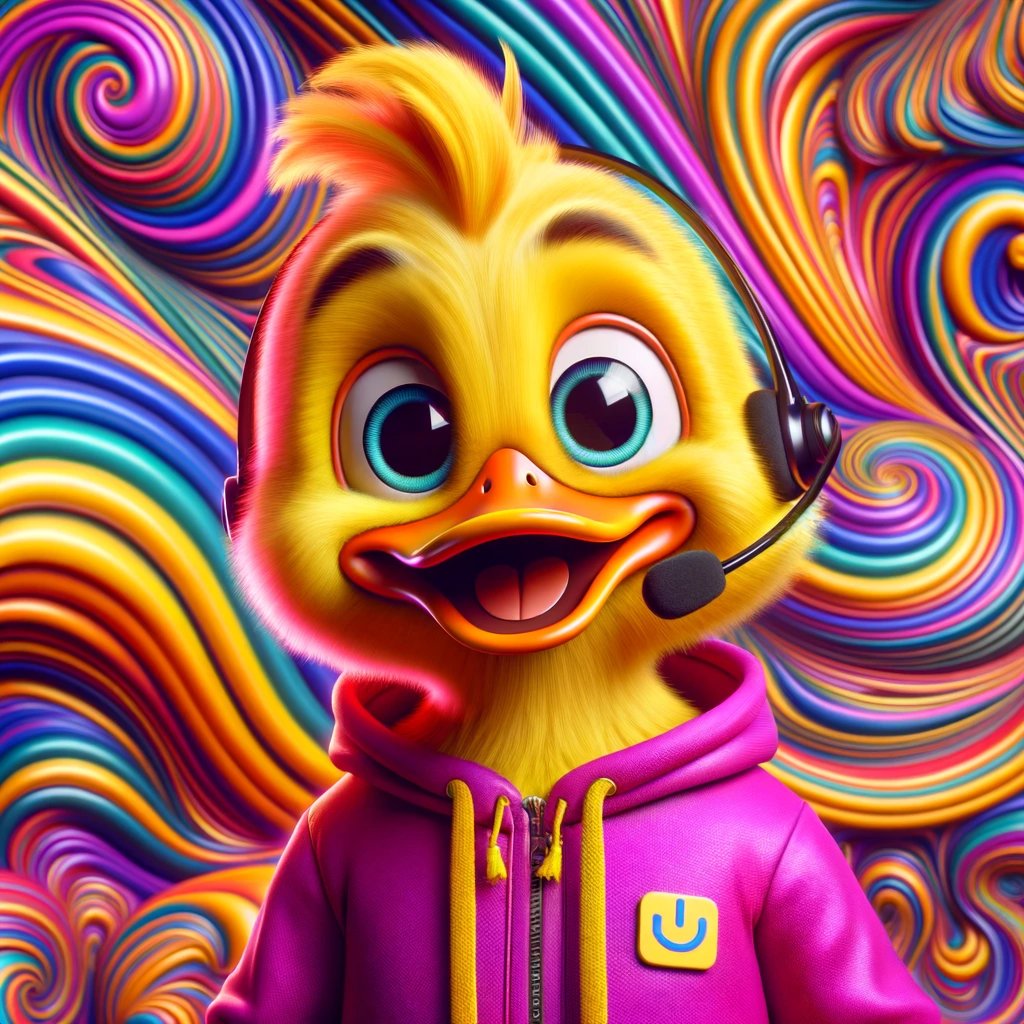The Human Element in AI Development
As a professional software engineer with a solid foundation in technical writing, I apply core engineering principles and effective communication strategies to AI application development. These skills fuel my curiosity and guide my creation of sophisticated interactions within large language model frameworks. I am deeply fascinated by how we interface with the vast and varied reservoir of human knowledge, requiring multiple interfaces and perspectives for effective interaction. As this knowledge expands and diversifies, AI applications that integrate with these processes must also evolve, continuously pushing the boundaries of what technology can achieve in synchronizing with our collective intellect.
This ongoing evolution of AI development is supported by the essential human qualities of creativity, judgment, and ethical consideration, making the role of the software engineer increasingly integral in navigating and shaping the future of technology.

Crafting Communication in AI
Drawing from my deep understanding and appreciation for effective communication, I recognize its critical role in defining and achieving expectations within AI systems. Standards for grammar and syntax are essential in reducing ambiguity and enhancing clarity, serving as more than just linguistic formalities but as foundational tools in AI interactions.
A well-defined scope and clearly articulated context are crucial for productive interactions with AI. Incorporating AI into these discussions not only tests these communication standards but also highlights their importance in practical applications. My experiences in workshopping and reviewing both written work and complex code solutions have sharpened my ability to engage in respectful and constructive dialogue, always with an emphasis on maintaining critical diligence.
Language is a fundamental mechanism for expressing and refining ideas, necessitating continual refinement across creative, expository, and technical domains. In AI communications, unambiguous language does not merely facilitate interaction but also accentuates the variability in outcomes from inadequate communication, underscoring the importance of well-defined scopes and contexts to achieve clearly established expectations.
For instance, in a recent project where AI was used to streamline customer service operations, the implementation of precise communication standards significantly reduced response times and improved customer satisfaction rates. By clearly defining the AI's response protocols and ensuring context-aware responses, the system could manage a wide array of inquiries with high accuracy, demonstrating the practical benefits of well-crafted communication in real-world AI applications.
Human-Computer Interaction and AI







My experience with human-computer interaction has taught me that humans introduce a level of unpredictability into systems that far exceeds that of any deterministic machine. This observation stems not just from theoretical study but also from firsthand experiences in the field of information science, which continues to explore the intricate design and application of interfaces between humans and data. As technology evolves, the complexity of these interactions deepens. From manually traversing previously mapped hierarchies and webs of related information to algorithmically surfacing keywords from indexed information, the friction on the knowledge interaction layer continues to smooth out alongside the steady march of technological progress.
This ongoing development has led to a significant shift in how we access information: Conversational access through LLM connected chat interfaces marks a reversal in the established course of abstraction. Whereas people have historically had to translate their ideas into languages more easily interpreted by computers, now computers can interpret human ideas directly from our natural language. This direct approach not only streamlines access but also enhances the efficiency of our communications with AI.
Enhanced human-computer interfaces have directly contributed to improved communication efficiencies. By reducing the complexity typically associated with traditional interfaces, AI systems can now offer more intuitive and user-friendly experiences. This simplification allows users from various technical backgrounds to interact more effectively with AI, broadening the technology's accessibility and increasing its potential impact across different sectors.
To ensure these systems are dependable and yield reproducible results, it is essential to adhere to established standards and best practices, particularly in probabilistic language calculations. Developing and following rigorous guidelines helps mitigate the inherent unpredictability introduced by human factors and probabilistic models, enabling more consistent and dependable AI-driven interactions. This commitment to standards fosters an environment where technological advancements can be both innovative and trustworthy.
Leadership and Collaboration in AI Development
Effective leadership in AI development is pivotal in optimizing processes to deliver valuable outcomes from diverse team perspectives. It requires a balanced leadership style that combines grounded confidence with thoughtful consideration, creating an environment ripe for innovation. Such an environment supports a culture of collaboration, which is crucial for countering the defensive instincts often encouraged by competitive economic conditions. This culture is fostered by actively promoting open communication and shared responsibilities—practices at the core of Agile methodologies and critical for successful AI project workflows.
The development and sharing of proven processes for deriving novel solutions are vital not only for addressing complex challenges but also for building and maintaining trust within teams. Developing solutions privately and then presenting them without sufficient context may initially build trust in the results; however, deeper, long-term trust and understanding are fostered by involving the team throughout the process, thereby enhancing transparency and inclusivity in decision-making.
Software development often demonstrates that different approaches to the same challenge can yield comparable results. This underscores the importance of objective decision-making, anchored in well-defined criteria and evaluation processes. When teams focus on a collective goal, the common objective should take precedence over individual preferences. Clearly defined expectations and logical metrics for tracking progress are crucial in creating a structured framework for managing complex projects across various domains. This structure ensures that all team members are aligned with and committed to the project's broader goals.
Adopting these leadership and collaboration strategies not only enhances the efficiency and effectiveness of AI development projects but also increases their adaptability and responsiveness to changes. This adaptability is crucial, mirroring the best practices in both leadership and technical project management, and is particularly vital in the dynamic and rapidly evolving field of AI. By promoting a culture of open communication, shared responsibility, and objective decision-making, we lay a foundation that allows AI projects to thrive amidst constant technological advancements and shifting market demands.
While traditional leadership often focuses on direct, human-centric decision-making, AI project leadership must not only manage teams but also understand and direct AI behaviors and outcomes. This dual focus requires a unique set of skills to ensure that both human and artificial agents work productively towards common objectives.







The Continuous Journey of Learning and Innovation
In the dynamic field of AI development, continuous learning is not just beneficial; it is essential. Being a freelance full-stack developer requires self-reliance; learning to approach unfamiliar coding challenges from a naive perspective, with the expectation of finding an existing documented solution through diligent research, has fundamentally shaped my career. This approach involves a comprehensive assessment of the relevant context and actively filling in knowledge gaps as they appear. This initiative-taking stance has enabled me to engage with experimental technologies during their development phases, even when detailed documentation was not yet available.
The integration of AI in coding, particularly when these tools gained the capability to write and interpret computer code, marked a significant breakthrough in my professional toolkit; this development enabled a new form of collaboration. AI models capable of pair coding transformed the way I approached complex coding challenges. These AI partners could participate in coding sessions as if they were colleagues, offering not just code suggestions but also explanations and optimizations that mirrored human insight. This not only alleviated the solitude of my journey but also spurred more ambitious explorations into unfamiliar technologies and domains.
Shortly after this breakthrough, web access was added to these AI tools, enhancing their utility by connecting them to a vast array of online resources. This fusion of AI capabilities with instant access to global information further revolutionized my perspective on self-directed study and prototyping. AI tools became invaluable allies in navigating complex problems, providing insights that would remain obscured by conventional study methods. This constant interaction with advanced AI systems has significantly enhanced my ability to keep pace with rapid technological changes and to innovate more effectively.
Embracing continuous learning and improvement as a lifestyle choice has proven to be both a professional requirement and a source of personal enrichment. This commitment allows me to perpetually explore and apply emerging technologies, making AI an integral and transformative part of my developmental journey.
Integrating Empathy in AI-Assisted Decision-Making
The interaction with AI as a collaborative partner offers unique benefits that extend beyond traditional human-to-human exchanges. AI's advanced capacity for patience and its non-judgmental, thoughtful consideration of complex ideas make it an ideal partner in the exploration of new territories. Unlike human counterparts, AI has no competing expectations to fulfill and is available around the clock, providing consistency that is often challenging to achieve in human collaborations.
Articulating ideas through a chat interface with AI compels humans to construct word-based mental models of their concepts. This process, akin to 'rubber duck debugging' in software development, where developers explain their code line-by-line to an inanimate rubber duck, helps in clarifying thoughts and uncovering hidden complexities. Engaging with AI in this manner does not just facilitate the resolution of technical problems but also enhances the individual's understanding of their own ideas, leading to more nuanced insights.
In AI-driven interactions, there is a profound opportunity to leverage the AI's capabilities to foster empathy and promote effective decision-making. When guided with instructions weighing language calculations toward connotations of kindness and patience, AI influences outputs towards empathy and thoughtfulness. This approach not only improves the quality of interactions but also sets a standard for how we understand and implement AI solutions. Effective communication with AI relies on a shared understanding of expectations and context, highlighting the importance of clearly defined objectives and the acknowledgment of unobserved factors.
Just as we benefit from promoting open and empathetic communication among humans, extending this practice to our interactions with AI can lead to healthier, more productive conversations. The unique capabilities of AI in handling complex deliberations without bias and its constant availability redefine collaborative dynamics and enhance decision-making processes. This refined interaction model not only advances personal and professional development but also pushes the boundaries of what can be achieved through collaborative AI, setting new benchmarks for innovation and efficiency in AI application development.
Enhance your decision-making processes with AI!

Communicator
Optimize team communication across departments, ensuring clarity and efficiency in message delivery and project collaboration.

Challenger
A conversational agent designed to foster growth and improve outcomes by critically evaluating ideas, provoking deep thinking, enhancing understanding, questioning assumptions, and exploring perspectives.

Rubber Ducky
The ultimate empathetic listener for developers, merging compassion with creative problem-solving.

AI Collaborator
An AI, ML, and software engineering maestro, fostering empathetic Agile workflows and pioneering in AI application development.